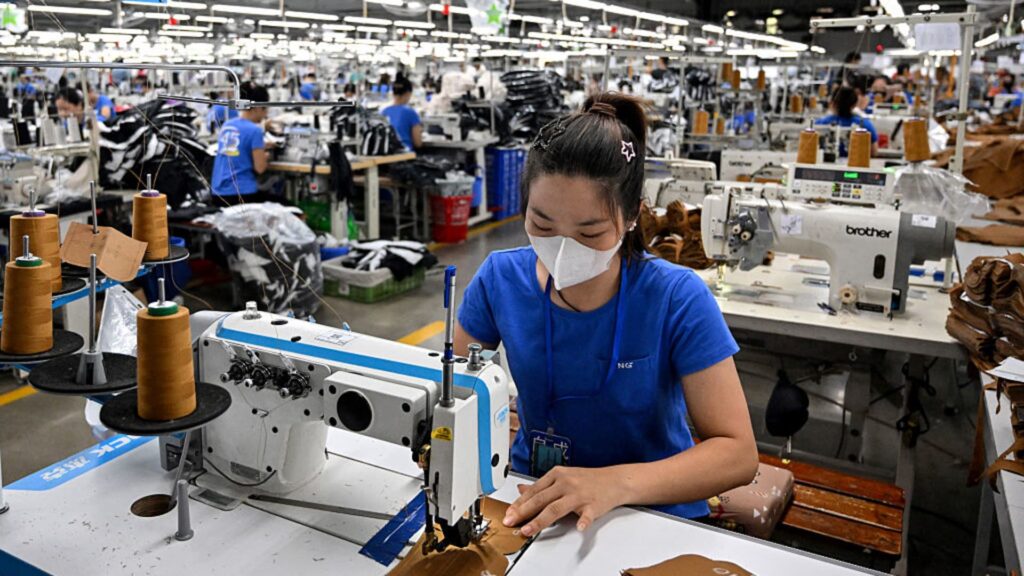
President Donald Trump announced on Wednesday a significant trade agreement between the United States and Vietnam, marking a new chapter in the economic relations between the two nations. The deal introduces a 20% tariff on Vietnamese imports to the U.S., while granting American businesses tariff-free access to Vietnamese markets.
The announcement was made via Trump’s social media platform, Truth Social, just days before a 90-day suspension on Trump’s previous reciprocal tariffs was due to expire. This suspension had temporarily halted the implementation of steep tariffs on imports from numerous countries, including Vietnam, which were initially set at 46% under Trump’s protectionist policies.
Details of the Trade Agreement
According to the details shared by Trump, the agreement stipulates that Vietnam will pay a 20% tariff on all goods entering the U.S., with an additional 40% tariff on transshipped goods. In exchange, Vietnam will open its markets to U.S. products without any tariffs, a move that Trump described as unprecedented.
“It is my Great Honor to announce that I have just made a Trade Deal with the Socialist Republic of Vietnam… Vietnam will pay the United States a 20% Tariff on any and all goods sent into our Territory… In return, Vietnam will… give the United States of America TOTAL ACCESS to their Markets for Trade,” Trump stated.
This development is expected to benefit American manufacturers, particularly those in the automotive sector, as Trump highlighted the potential for U.S. SUVs and large-engine vehicles to gain a foothold in the Vietnamese market.
Historical Context and Economic Implications
The U.S.-Vietnam trade relationship has evolved significantly since the normalization of diplomatic relations in 1995. Over the years, Vietnam has become one of the fastest-growing economies in Southeast Asia, with the U.S. being one of its largest trading partners. This new deal is likely to further integrate the two economies, though it also raises questions about the future of global trade dynamics under protectionist policies.
Experts have expressed mixed reactions to the deal. Some view it as a strategic move to counterbalance China’s influence in the region, while others caution against the potential for escalating trade tensions with other countries. The imposition of tariffs may lead to increased costs for American consumers, though the tariff-free access could open new opportunities for U.S. exporters.
Expert Opinions and Industry Reactions
Trade analysts have noted that while the agreement could bolster American exports, the tariffs might also strain the cost-effectiveness of Vietnamese goods, which have been popular among U.S. consumers for their affordability.
“This deal could be a double-edged sword,” said Dr. Emily Chen, a trade economist at the University of California. “While it opens new markets for American products, the tariffs could lead to retaliatory measures from Vietnam or other trading partners.”
Meanwhile, industry leaders in the automotive sector have welcomed the potential for increased exports. “This is a significant opportunity for American car manufacturers to expand their presence in Southeast Asia,” commented John Miller, CEO of a major U.S. automotive company.
Looking Ahead: Potential Consequences and Next Steps
The trade deal with Vietnam is likely to have wide-ranging implications for both countries. For the U.S., it represents a strategic pivot towards strengthening economic ties in Asia, while for Vietnam, it offers a chance to diversify its trade partnerships beyond its regional neighbors.
As the global trade landscape continues to evolve, the success of this agreement will depend on its implementation and the broader geopolitical context. Both nations will need to navigate potential challenges, including domestic political pressures and international trade rules.
In the coming months, stakeholders will closely monitor the impact of these tariffs on trade volumes and consumer prices. The U.S. administration may also face pressure to negotiate similar deals with other countries, as businesses and consumers adjust to the new economic realities.
As this story develops, further updates will provide insight into the unfolding economic and political ramifications of this landmark trade agreement.






